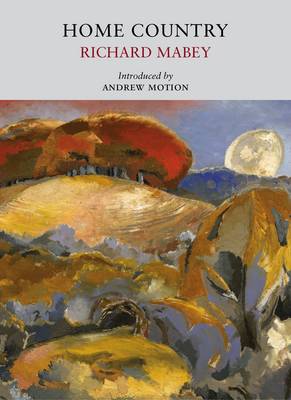Nature Classics Library
2 total works
The Chilterns: that great chalk enscarpment of southern England, studded with beechwood, intercut with motorways and the sprawling suburbs of London. This is where Richard Mabey grew up and spent most of his adult life. It was his laboratory, a place that has left an indelibe mark on his writing. But how did this landscape shape Britain's most popular nature writer? How has it influenced his understanding of the natural world? Home Country is a memoir told on ridgeway and in beechwood, from the childhood dens built in the grounds of a derelict mansion and his dogged searches for lapwing nests, through his explorations in the fringes of outer London, to the rediscovery of his roots in the Chilterns when he became responsible for a 16-acre woodland of his own. Like Richard Mabey's Nature Cure (2005) and Beechcomings (2007), it is a journey defined by its proximity to nature. It is also a vision that does not suppose humans are masters, or even stewards of nature, but partners in a colourful and rowdy striving for life.
During the early 1970s Richard Mabey set about mapping his unofficial countryside. He walked crumbling city docks and overgrown bomb sites, navigating inner city canals and car parks, exploring sewage works, gravel pits, rubbish tips. What he discovered runs deeper than a natural history of our suburbs and cities. The Unofficial Countryside prescribes another way of seeing, another way of experiencing nature in our daily lives. Wild flowers glimpsed from a commuter train. A kestrel hawking above a public park. Enchanter's nightshade growing through pavement cracks. Fox cubs playing on a motorway's scrubby fringe. There is a scarcely a nook in our urban landscape incapable of supporting life. It is an inspiration to find this abundance, to discover how plants, birds, mammals and insects flourish against the odds in the most obscure and surprising places.

